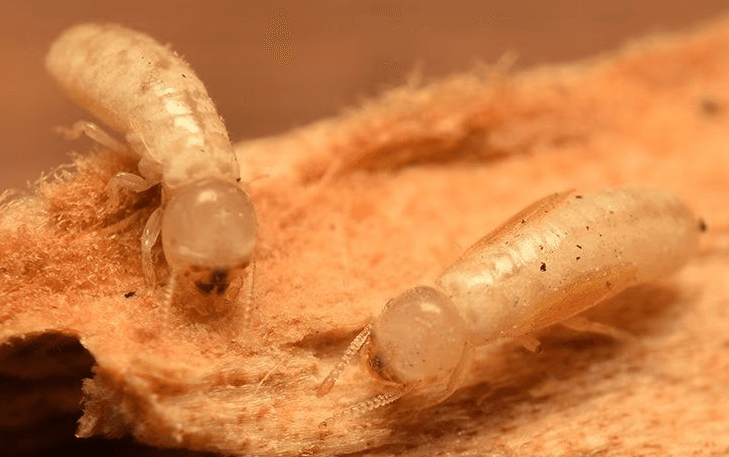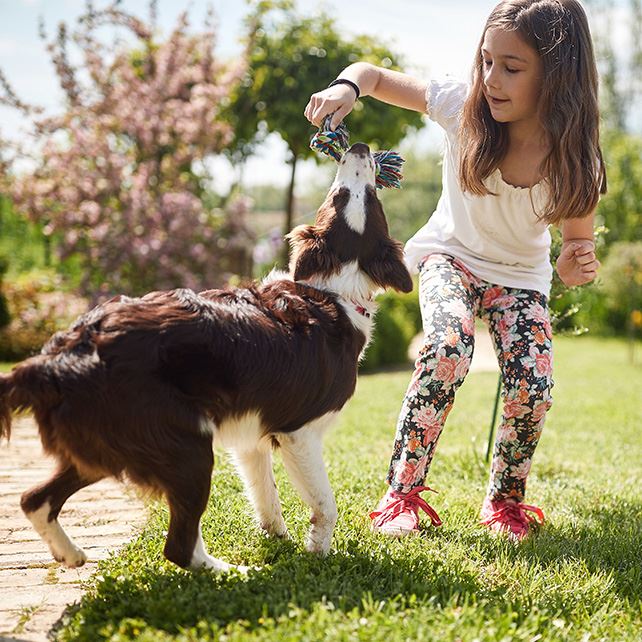
Drywood Termite Identification & Prevention In Nassau & Suffolk County, NY
What do drywood termites look like?
Latin name: Cryptotermes spp. and Incisitermes spp.
There are three distinct groups into which termites are divided: subterranean, drywood, and dampwood.
Since the worker termites in these groups more or less look the same, the appearance of the reproductive caste (alates) and soldiers is important.
Wings
Alates, or swarmers, have two sets of wings. The front set of wings has a pattern of three or more heavy, well-pigmented veins in the outer part of that front wing. Also, swarmers shed their wings very quickly after swarming, so most all dead swarmer bodies do not have attached wings. This is a good characteristic to distinguish drywood termite swarms from subterranean termite swarms since subterranean swarmers will consist of dead swarmers with and without attached wings. Swarmers can be up to 12 mm long.
Body
Drywood termite soldiers have large mandibles (mouthparts) with teeth and their pronotum is as wide, or wider, than the head. Also, most drywood termite soldiers and workers are larger than the soldiers and workers in subterranean termite colonies.

How did I get drywood termites?
Drywood termites get all the moisture they need to survive and develop from humidity in the air and moisture they get from consuming the wood they eat. As a result, the drywood termites can survive without living in soil and do not construct their nests in the ground, but instead construct their nests in the dry, above ground wood they infest. The pests enter homes through exposed wood or infested items like wooden furniture.
How serious are drywood termites?
Infestations can be limited to one area of the house or can be widespread. Damage is often extensive, as these pests will chew tunnels inside wooden beams or other wooden objects, weakening them from the inside. Home repairs for drywood termite damage may be costly and involve the use of house fumigation procedures.
How do I get rid of drywood termites?
All State Pest Control is trained to help manage termites. Since every home or property is different, the All State Pest Control technician will design a unique program for your situation.
Keeping termites out of your home is an ongoing process, not a one-time treatment. All State Pest Control’s exclusive A.I.M. solution is a continuing cycle of three critical steps—Assess, Implement and Monitor.
All State Pest Control can provide the right termite control solution to keep termites in their place…out of your home.

Reasons to Choose All State Pest Control
-
Hablamos EspañolPest control services provided by a Spanish-speaking team.
-
Emergency Services AvailableGet the immediate help you need, whenever you need it.
-
100% Satisfaction GuaranteeWe're so confident you'll be happy with our services, we guarantee it.
-
Offering 100% Free QuotesGet started by giving us a call and setting up a free estimate.
What are the signs of a drywood termite infestation?
Swarms
When a drywood termite colony is mature, swarms of winged male and female reproductive insects are produced. These reproductive termites fly out of their colony to create new colonies after mating. Warm temperatures and heavy rains instigate swarms.
Frass
Drywood termites extract as much water as possible from the feces to conserve it. The result are very distinct fecal pellets called frass. They are a hexagonal and all are a similar size of 1 mm long. The termites kick them out of their tunnel. Appearance of mounds of these pellets indicate activity. It is important to note that pellets can remain almost indefinitely from a dead colony and may mislead a homeowner that it is current activity. Contact a termite control professional to confirm current activity.

Hear From Our Happy Customers
At All State Pest Control, your satisfaction is our priority! See for yourself what people have to say about working with us.
-
“I highly recommend this business as they are very professional and reasonably priced.”- Stray C.
-
“The job was very thorough, very reasonably priced and Tom was very professional.”- Patrick M.
-
“So happy we used this company and will be using them again! Great work great owner and great service.”- Stefani J.
-
“For bringing them so much work they occasionally offer us free treatments and that is just good business!”- Derek B.
Where do drywood termites live?
Create colonies in wood and occasionally other cellulose material, with no connection to the ground necessary; often found in attic wood; need very little moisture.
What is the drywood termite's reproduction and life cycle?
Nymphs pass through four to seven instars before reaching adulthood; sexual forms eventually swarm to form new colonies.
It is estimated that termites cause over a billion dollars in damage to United States homes each year. Unlike fires, hurricanes and tornadoes, termite damage is seldom covered in homeowner insurance policies. The dangers of termite infestation are also underpublicized, leading most homeowners to believe that no preventive measures are necessary.
However, annual inspections are an effective means of preventing major damage to your home. There are two major families of termite present in North America: subterranean and drywood termites. Both species feed on cellulose material, including books, dried plants and furniture, as well structural wood. While subterranean termites burrow underground, drywood termites do not need the soil. After a colony of drywood termites has gained entrance to a home, they are capable of dispersing widely throughout many rooms and floors.
Although drywood termites are far less common than subterranean termites and are found primarily in coastal, southern states and the Southwestern states, drywood termite damage is substantial. Drywood termite infestations are identifiable by piles of fecal pellets. These fecal pellets are often first noticed in places like windowsills. If you find piles of tiny pellets in your home, it could be a sign of a drywood termite infestation. A trained home pest control professional can provide a thorough inspection.



